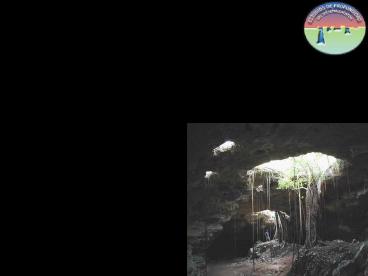HYDROGEOLOGY OF THE ZACAT - PowerPoint PPT Presentation
Title:
HYDROGEOLOGY OF THE ZACAT
Description:
The cenote Zacat n is the largest flooded sinkhole (cenote) in the world. ... Collect lots of field data and put all the information into true 3-dimensional context ... – PowerPoint PPT presentation
Number of Views:41
Avg rating:3.0/5.0
Title: HYDROGEOLOGY OF THE ZACAT
1
HYDROGEOLOGY OF THE ZACATÓN CAVE SYSTEM
Building a Geodatabase from (below) the Ground Up
Marcus Gary Department of Geological Sciences The
University of Texas at Austin
2
About the Caves
- The cenote Zacatón is the largest flooded
sinkhole (cenote) in the world. - Hydrothermal Karst System
Some of the Research Goals at the Zacatón System
- Interpret the geological history that formed the
caves - Create a 3-D geodatabase
3
Cenotes of Sistema Zacatón
4
Collect lots of field data and put all the
information into true 3-dimensional context
Rock Samples
Biological Samples
Water Samples
3-D Imaging using LADAR
5
What is LADAR?
LAser Detection And Ranging or LAser raDAR
Similar to LIDAR, but a bit different
Light Intensity Distance And Ranging
LIDAR
LADAR
- Uses laser scanner
- Moving platform
- Downlooking only
- Centimeter accuracy
- Uses laser scanner
- Static platform
- Full range of vision
- Millimeter accuracy
6
LADAR Instrument
Pan-Tilt Scanner Riegl LMS-25
- Frame Rate 90 min / frame
- Range 150 m
- Accuracy 20 mm
- Approx. 6,000,000 points/frame
- FOV 90 / -45 degrees
7
LADAR output what you get
- Reflectance Intensity (greyscale, typ. 0-255)
- Range Data
- raw data typ. Angle, Angle, Distance
- Plots of range data are known as Point Clouds
- Plots can be 3D or 2D (e.g. a JPEG image in which
x y spacing represents pitch and yaw angular
increment and color represents scaled range) - Spectral Data (optional RGB intensity)
- NOTE A single LADAR data frame represents a
2-1/2 D view of the world
8
1. Drill and set benchmark
A Total Station survey instrument was used to
precisely georeference benchmarks that are the
origin of each LADAR scan.
2. Shoot survey with Total Station
3. Record distance and angles and process
data (easting, northing, elevation)
9
Lots of Benchmarks were surveyed
LADAR scanning benchmark Water Level
benchmark Intermediate benchmark
10
A few scanning locations
11
Range image of Zacatón created by LADAR
instrument software
12
Color Depth Map of Range Image of Cave
Cueva Cuarteles, Rancho la Azufrosa, Tamps.,
Mexico 1,500,000 3D data points
13
360-deg Intensity Image of Cave 750v x 2000h
14
ZACATÓN
15
First shot at making a TIN of the scene
16
Some problems occur when processing TINs from
LADAR data (mesh from origin, not in Z-direction)
LADAR can even image a person
TIN man
Intensity Image
17
Data Processing
- Lots of data need REALLY BIG computer
- Texas Advanced Computing Center (TACC) has a
24-processor SGI Onyx2 and the 3-D visualization
lab to process and view the entire dataset (and
more).
18
Future 3-D data collection in different medians
Geophysical resistivity data of rock structures
between sinkholes
LADAR data of the surface features (already
acquired).
SONAR data of the underwater voids (caves)

